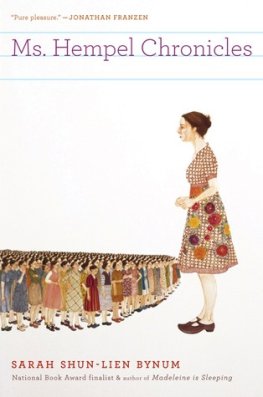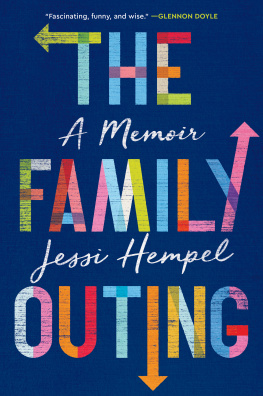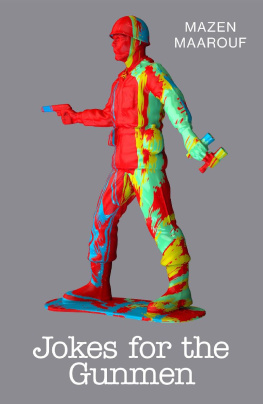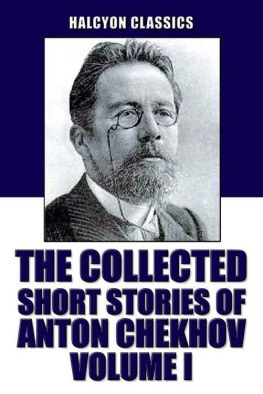Amy Hempel - The Collected Stories of Amy Hempel
Here you can read online Amy Hempel - The Collected Stories of Amy Hempel full text of the book (entire story) in english for free. Download pdf and epub, get meaning, cover and reviews about this ebook. year: 2006, publisher: Scribner, genre: Detective and thriller. Description of the work, (preface) as well as reviews are available. Best literature library LitArk.com created for fans of good reading and offers a wide selection of genres:
Romance novel
Science fiction
Adventure
Detective
Science
History
Home and family
Prose
Art
Politics
Computer
Non-fiction
Religion
Business
Children
Humor
Choose a favorite category and find really read worthwhile books. Enjoy immersion in the world of imagination, feel the emotions of the characters or learn something new for yourself, make an fascinating discovery.
- Book:The Collected Stories of Amy Hempel
- Author:
- Publisher:Scribner
- Genre:
- Year:2006
- Rating:3 / 5
- Favourites:Add to favourites
- Your mark:
- 60
- 1
- 2
- 3
- 4
- 5
The Collected Stories of Amy Hempel: summary, description and annotation
We offer to read an annotation, description, summary or preface (depends on what the author of the book "The Collected Stories of Amy Hempel" wrote himself). If you haven't found the necessary information about the book — write in the comments, we will try to find it.
The Collected Stories of Amy Hempel — read online for free the complete book (whole text) full work
Below is the text of the book, divided by pages. System saving the place of the last page read, allows you to conveniently read the book "The Collected Stories of Amy Hempel" online for free, without having to search again every time where you left off. Put a bookmark, and you can go to the page where you finished reading at any time.
Font size:
Interval:
Bookmark:


SCRIBNER
1230 Avenue of the Americas
New York, NY 10020
This book is a work of fiction. Names, characters, places, and incidents either are products of the authors imagination or are used fictitiously. Any resemblance to actual events or locales or persons, living or dead, is entirely coincidental.
Reasons to Live copyright 1985 by Amy Hempel
At the Gates of the Animal Kingdom copyright 1986, 1987, 1988, 1989, 1990 by Amy Hempel
Tumble Home copyright 1997 by Amy Hempel
The Dog of the Marriage copyright 2005 by Amy Hempel
On Amy Hempel copyright 2006 by Rick Moody
All rights reserved, including the right of reproduction in whole or in part in any form.
These titles were previously published individually.
SCRIBNER and design are trademarks of Macmillan Library Reference USA, Inc. used under license by Simon & Schuster, the publisher of this work.
DESIGNED BY ERICH HOBBING
Library of Congress Cataloging-in-Publication Data
Hempel, Amy.
[Short stories. Selections]
The collected stories of Amy Hempel / Amy Hempel; with an introduction by Rick Moody.
p. cm.
Contents: Reasons to liveAt the gates of the animal kingdomTumble homeThe dog of the marriage
1. United StatesSocial life and customsFiction. I. Title.
PS3558.E47916A6 2006
813.54dc22
2005057608
ISBN-10: 1-4165-4603-0
ISBN-13: 978-1-4165-4603-0
constitutes an extension of the copyright page.
Visit us on the World Wide Web:
http://www.SimonSays.com
To Nan Graham
Contents
On Amy Hempel
Its all about the sentences. Its about the way the sentences move in the paragraphs. Its about rhythm. Its about ambiguity. Its about the way emotion, in difficult circumstances, gets captured in language. Its about instants of consciousness. Its about besieged consciousness. Its about love trouble. Its about death. Its about suicide. Its about the body. Its about skepticism. Its against sentimentality. Its against cheap sentiment. Its about regret. Its about survival. Its about the sentences used to enact and defend survival.
In 1985, when Amy Hempels first collection Reasons to Live was first published, we found ourselves in the heady period of the American short-story renaissance. However briefly, it was not only acceptable to write and publish short stories (there were many more venues for them in that bygone time), but it was even possible to sell a few copies of your collection along the way. Some of this had to do with the notable Vintage Contemporaries line of paperback short fiction, which brought us, in its first seasons, such voices as Richard Ford, Jay McInerney, and Raymond Carver. Some of this had to do with the editorial vision of one Gordon Lish, as keen and vigorous a proponent of literary fiction as has existed in the last fifty years. In the course of his ascendancy, he had the temerity of purpose to bring to light writers like Carver, Barry Hannah, Mary Robison, and Amy Hempel, among many others.
I was in graduate school in this heady moment. I was in my second year of graduate school when Hempels first collection hit shelves (and along with Self-Help, by Lorrie Moore, it was one of the books that everyone wanted to read at the time). I was exhibiting symptoms of boredom and impatience with most of the masculine examples of contemporary fiction. I couldnt sympathize, finally, with Ford and McInerney characters. I had never punched another man, nor shot a bird from the sky, nor had I fact-checked among the coke-snorting glitterati. And these narratives by male writers seemed to require complicity with their larger-than-life protagonists.
Then came the Hempel collection. As with Lorrie Moore, the Hempel stories were urbane, witty, somber, dazzling, oblique, and quietly, desperately heroic. In Reasons to Live, one had a sense that the author really was trying to use sentences to save lives, because there were so many memorable, quotable sentences hiding in the occasionally inscrutable fragments of life contained therein: A blind date is coming to pick me up, and unless my hair grows an inch by seven oclock, I am not going to answer the door. Or: In the park, I saw a dog try to eat his own shadow, and another dogI am sure of itwas herding a stand of elms. Or: Heres a trick I found for how to finally get some sleep. I sleep in my husbands bed. That way the empty bed I look at is my own.
These Hempel sentences, with their longing and their profound disquiet, do not rage or posture the way the men of the minimalist realist period did. They ache. And this ache seems to have everything to do with a rather profound and cruelly underestimated lineage of women writers in North America, writers in many cases much more important than their male counterparts, among them Grace Paley, Mary Robison, Alice Munro, Lydia Davis, Joy Williams, Cynthia Ozick, and Ann Beattie.
Well, to put it another way: Hempel, in this first collection, came out from under Paleys skirt, if I can manhandle an Ernest Hemingway reference, but she also became her own thing. Where Paleys voice has everything to do with the New York City of the first half of the twentieth century, and its slangy Yiddishisms, Hempels voice has something to do with stand-up comedy, contemporary poetry, celebrity magazines, visual arts, the West, and the popular song. (Poetry especially becomes more and more of an influence on her nearly Japanese compaction the further along she goes in her work.)
At the time of publication, Reasons to Live was noteworthy for one overpowering story, a story which, at this late date, is known to almost all enthusiasts of recent short fiction, since it is anthologized frequently. The story in question is named In the Cemetery Where Al Jolson Is Buried. Though the narrative frame of this composition is accessible enoughthe narrator tries to buoy the spirits of a dying friend through the distraction of the well-turned anecdoteits the violations of well-made story structure and conventionally literary values that make the story even more lasting: Make it useless stuff or skip it, the dying friend says at the outset (perhaps a manifesto for Hempels mulch of popular culture and high literature), and the narrator complies: Did she know that Tammy Wynette had changed her tune? Really. That now she sings Stand by Your Friends ? That Paul Anka did it, too, I said. Does Youre Having Our Baby. That he got sick of all that feminist bitching.
Al Jolson is a gem in a volume that while possessed of bounteous moments of transfiguration (I like, for example, the lovely conversation between a father and his children about Jell-O in Celia Is Back, or Wesley the world-weary comedian in Three Popes Walk into a Bar) is the beginning of a great career rather than its finest hour. Id go so far as to say that Reasons to Live looks like a sweet but quaint memory in the brilliant light of Hempels next book, At the Gates of the Animal Kingdom (1990). Its true that it took Hempel five years to write the 137 pages of the second volume of stories, and its true that this was actually fast for her ( Tumble Home took seven years, and The Dog of the Marriage took eight), but when the results are as pitch-perfect and unforgettable as The Harvest, or The Most Girl Part of You, or Rapture of the Deep, all of them stunners from the second volume, who really gives a shit how long the book takes or whether its shorter than one of those big encyclopedic tomes that the boys, obsessed with the sound of their own voices, were frequently writing in the same period? When The Harvest first came out in Gordon Lishs Quarterly, I remember being arrested not only by the broad course of the story (of the narrators massive car accident) itself, but most especially by the double-space break in the middle, after which the following appeared: I leave a lot out when I tell the truth. The same when I write a story. Im going to start now to tell you what I left out of The Harvest, and maybe begin to wonder why I had to leave it out. The narrative then goes on to undercut virtually every trustworthy assertion made in its prior pages, doing a merry dance of destruction on the grave of the realistic fiction, conjuring instead the many illuminating paradoxes of consciousness and identity. Only a scant few works of contemporary fiction have done the same with such grace and style.
Next pageFont size:
Interval:
Bookmark:
Similar books «The Collected Stories of Amy Hempel»
Look at similar books to The Collected Stories of Amy Hempel. We have selected literature similar in name and meaning in the hope of providing readers with more options to find new, interesting, not yet read works.
Discussion, reviews of the book The Collected Stories of Amy Hempel and just readers' own opinions. Leave your comments, write what you think about the work, its meaning or the main characters. Specify what exactly you liked and what you didn't like, and why you think so.











